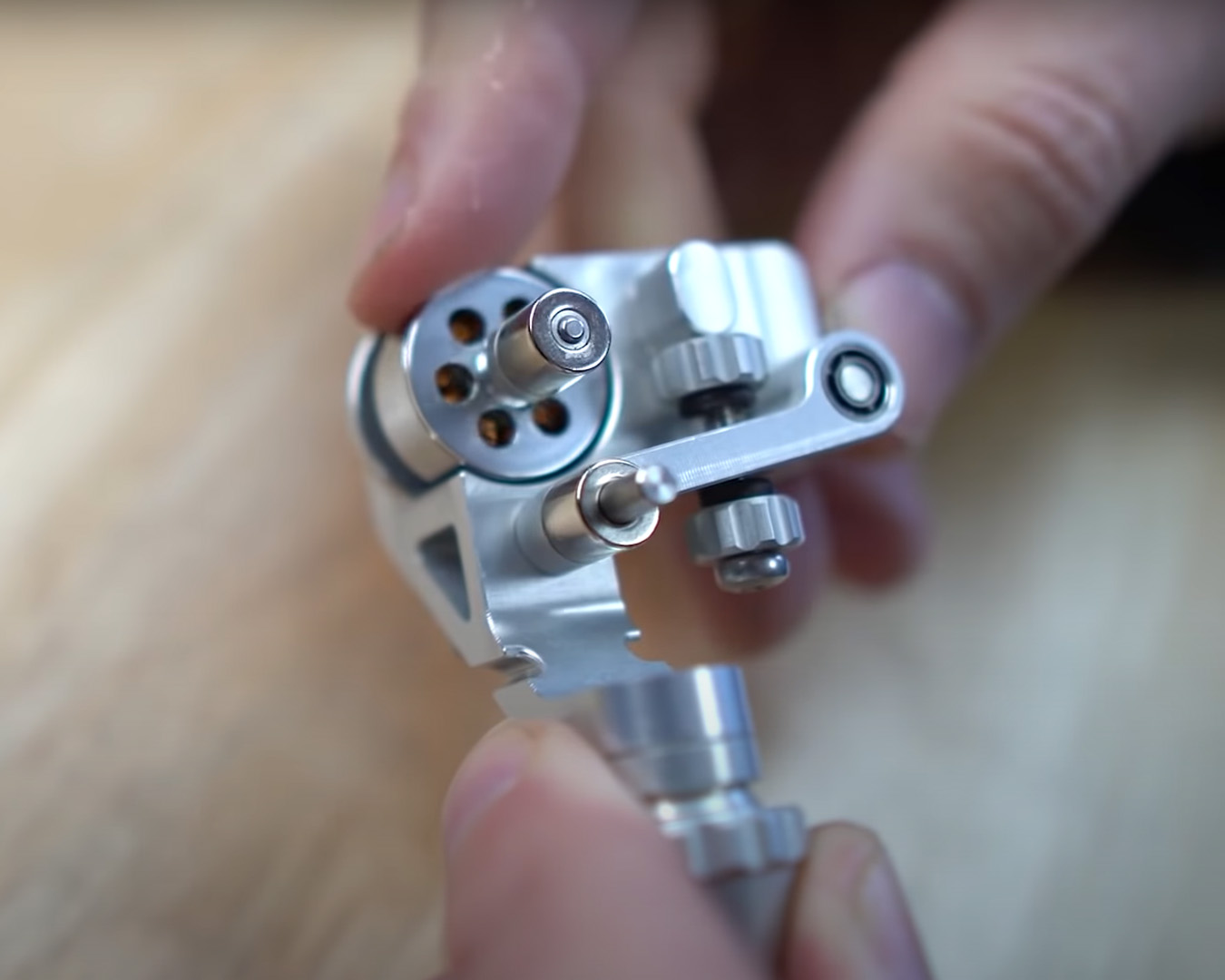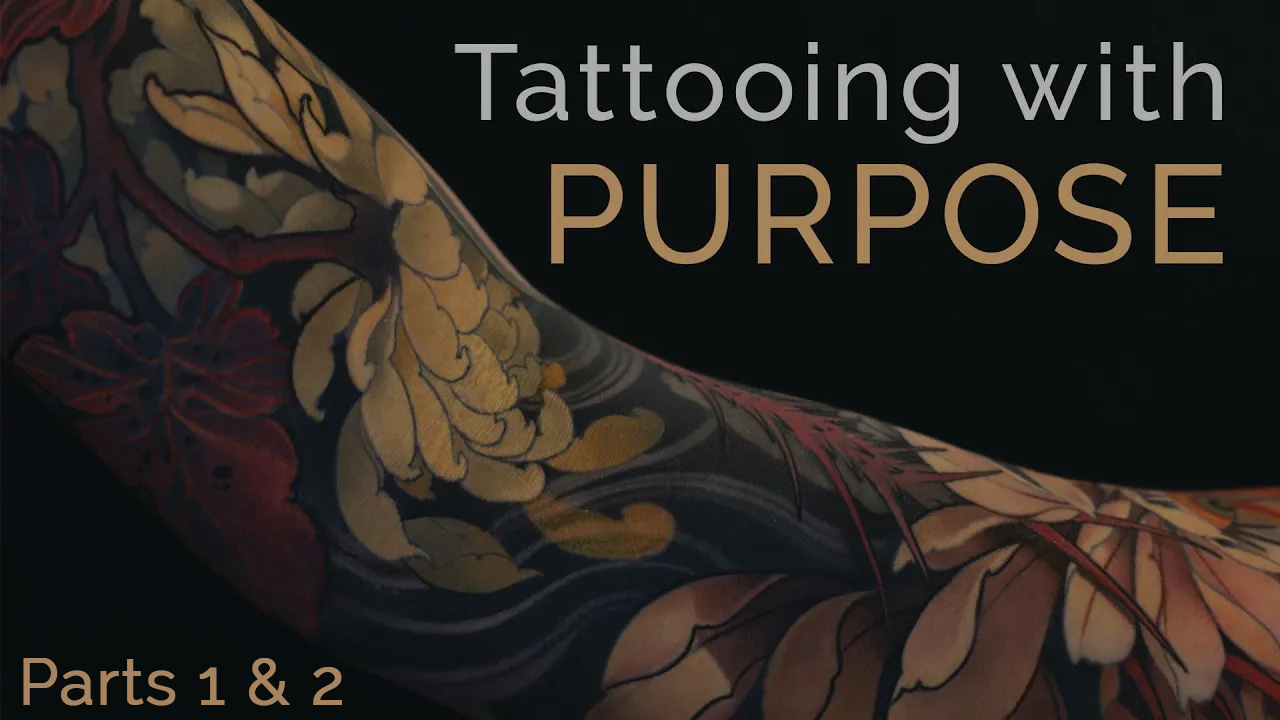Tattoo Science: The Problem With Rotaries Carson Hill EP 238

Tattoo Machines Part 1: The Problem With Rotaries! | Carson Hill | EP 238
Get Ready! These discussions illuminate the unique mechanisms of coils and rotaries, challenge traditional beliefs, choosing the right tool for the job, and explore the balance between innovation and established practices in the tattooing industry.
In this episode Jake and Carson go through a bit of the basics and discuss the essentials like;
- What are the major differences between coil and rotary tattoo machines?
- What are the similarities?
- What caused the huge revolution in rotary machine technology?
- What was wrong with coils to begin with?
And in the writing we take a bit of a narrowed focus on the actual mechanics of the different types of machines that are available.
We hope you enjoy this series!
This episode was made possible thanks to:
Interview by By Jake Meeks —
Writing By Daniel Pushcarich—
Topics: Coil Tattoo Machine, Rotary Tattoo Machine, Machine ergonomics,
 “I do feel that the rotary and coil kind of split in the industry, and I would really like to bridge that gap again. The rotary world is missing a lot if it’s completely departing from tradition.”
“I do feel that the rotary and coil kind of split in the industry, and I would really like to bridge that gap again. The rotary world is missing a lot if it’s completely departing from tradition.”
— Carson HIll
Carson HIll (@tattooistcarsonhill) Is the creator of Neuma Tattoo Machines. He understands the importance of having proper tools for each tattoo project, and believes that he has a duty as an artist and machine designer to make the best possible tattoo machines.
His mission as an artist is to improve and gain depth of experience and knowledge so that he is always improving technically and creatively.
Carson’s ultimate mission is to make the best possible tattooing equipment solutions. With Innovation, technology, and ground-breaking design, he has accomplished just what this industry needed with the Neuma FOUR.
Carson is based in CA and owns Neuma Tattoo Machines.
Please enjoy!
INTERVIEW LINKS, MENTIONS, AND SHOW NOTES BELOW…
SELECTED LINKS FROM THE EPISODE
- Connect with Carson Hill:
SHOW NOTES
- [00:00] A VERY Long Winded Intro
- [05:22] Coil and Rotary Machines! What are they Really?
- [10:22] What is "Give" on Coils and Rotaries? Brief Overview
- [14:58] A Problem with Bog or "Digital Give"
- [16:44] The Efficiency of Coil Machines
- [18:50] A Little Bog In Your Rotary Is Natural
- [21:32] Coils Are Not Superior Necessarily
- [24:07] Rotaries Are Less Intimidating
- [25:59] Outro
MORE Carson QUOTES FROM THIS INTERVIEW
Coil and Rotary Machines! What are they Really?
[05:22] “[Rotaries] are spinning, and [coils] are oscillating. The spinning motion of a rotary needs to be translated into oscillating motion. And that’s one of the main challenges, because ultimately we want oscillation which is what coils do by default.”
— Carson Hill
Coil Machines are basically an open circuit. They have two bobbins wrapped in copper wire turning them into coils. When you add electricity from the clip cord it sends a current through the machine and turns the 2 coils into an electromagnet pulling the armature bar down towards the coils. Then the current is released and the armature bar returns. This happens over and over in rapid succession.
A Rotary Machine on the other hand can vary drastically from one manufacturer to another. But, the main driver of the system is a rotating motor with a single coil inside. The motor is attached to a drive shaft which spins a cam wheel. In order for the motor to function properly the cam must make one full rotation. This last point is very important because it’s one of the defining factors that makes one machine more efficient than the other.
Depending on whether you have an “L” shaped rotary or a “Pen” style rotary is where the differences in cam systems and mechanisms start to occur.
- L Shape - The motor is positioned sideways and the needle bar is attached directly to the spinning cam, this creates the up and down motion for the bar.
- Pen Style - The motor is positioned vertical, and the cam will have some type of pin, grooved plate, or magnet that pushes a plunger bar into the plunger of a needle cartridge to extend the needles.
As I said before rotary machines vary widely between manufacturers so it may be good to look into how your machine works.
The Efficiency of Coil Machines
[16:44] Relating to rotaries “it wouldn’t necessarily be 10%, but it wouldn’t matter because the needle still gets in and out really quickly. It doesn’t have to go through that motion of completing a cycle.”
— Carson Hill
There’s something elusive about coil machines that rotaries have a very hard time replicating. The motor in a rotary machine needs to make one full rotation in order to make the cam drive the needle up and down, increasing the amount of dwell time, or time the needle spends inside the layers of the skin. Because of this you have to be extra careful since there is a lot more potential for the needle to cause skin trauma.
With coils there’s a phenomenon called “give” that’s created from the needle interacting with the skin. The resistance from the needles puncturing the skin creates a small disruption in the up and down motion of the armature bar, and this disruption makes the needle far less likely to dig too deep into the lower layers of skin.

Because of “Give” a coil machine can make for a much faster and smoother experience for the tattooer when laying down lines, packing in solid fields, etc.. Because of this efficiency you’re a lot less likely to cause serious trauma to the skin and have unnecessary swelling or scarring.
You Don’t Have To Be A Mechanic To Run A Rotary Machine
[21:32] “I always had trouble keeping my coils perfectly tuned, they were always a little erratic and unpredictable. And the best ones for some reason are heavy. Probably because their made from brass or iron and those work better than aluminum [for stability]”
— Carson Hill
Nothing beats the precision and tactile feedback offered by a finely tuned coil machine, but the maintenance of such machines can be quite challenging, especially for those less “mechanically inclined”. These devices can be rather erratic, heavy, and less ergonomic, influencing the overall tattooing experience. Prolonged exposure to the machine's vibrations could lead to potential nerve damage unless proper hand exercises are consistently applied.
On the other hand, the pen-style rotary machines, with their ergonomic design and consistent performance, hold an advantage over the traditional coil counterparts. The less complex nature of rotary machines, in comparison to the technical demands of coil machines, likely contributed to the resurgence of rotary devices. This shift made tattooing more accessible to a broader spectrum of artists, allowing them to focus on honing their artistic craft rather than wrestling with the intricate mechanics of coil machines. It's akin to the distinction between an automatic and a manual transmission.
PEOPLE MENTIONED
Want more tattoo education and resources?
Check out our Gear & Technology catalog HERE!
Transcript for this video can be found (here). All transcripts can be found (Here)
(Update when transcript page is made)
The Fireside Tattoo Network is home to the Fireside podcast, Fireside Technique video series and our Fireside Weekly blog.
The Fireside Tattoo podcast is hosted by veteran tattooer Jake Meeks, check out our episodes where we discuss, argue and wax philosophical, from tips for all levels of artists to trends in the tattoo world. Many guest artists have sat down for interviews and in-depth conversations and many more are planned…check back often!
Our Fireside Tattoo Overview video series offers informative, short, and detailed videos geared towards helping artists understand the science and nuances of tattoos and make more informed decisions to improve their work. We often take some of our more technical topics from our Fireside podcast and film an in-depth, narrated, time-lapse video showing exactly how Jake or our featured artists handle certain issues.
Support us while buying the stuff you need at the links below!
- Get 10% off the Neuma 4 with code “Fireside” at checkout
https://neumatattoo.com - Get 10 % off all S8 Tattoo products with promo code “Fireside”
https://s8tattoo.com/ - TattooNOW Website and Automation services at the link below
https://TattooNOW.com/Fireside - Get 10% off your order from Raw Pigments with code “fireside”
https://rawpigments.co/
Tattoo Science
Our goal as tattooers is to get ink into skin as efficiently as possible while causing the least amount of skin trauma in the process.
By gaining a basic understanding of how ink actually gets into skin, we give ourselves a much better chance for success. The Fireside Tattoo Network has interviewed specialists in tattoo machines, ink, fluid dynamics, and tattoo physics to bring you the most comprehensive tattoo science and physics information available anywhere.
Check out these popular tattoo science and tech articles:
Still interested, want more? You can look at our podcast episodes HERE!
Recent News
Inside Fireside: Mentality, Pain Management, and the Art of Client Care with Kurt Jacobson
- 09/06/24
Why Do We Care About Give? - Carson Hill
- 07/24/24





